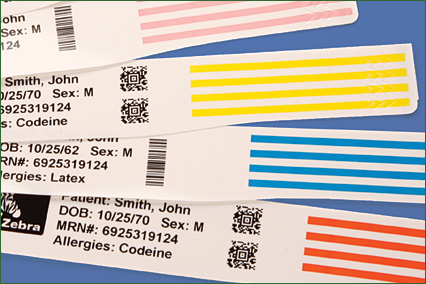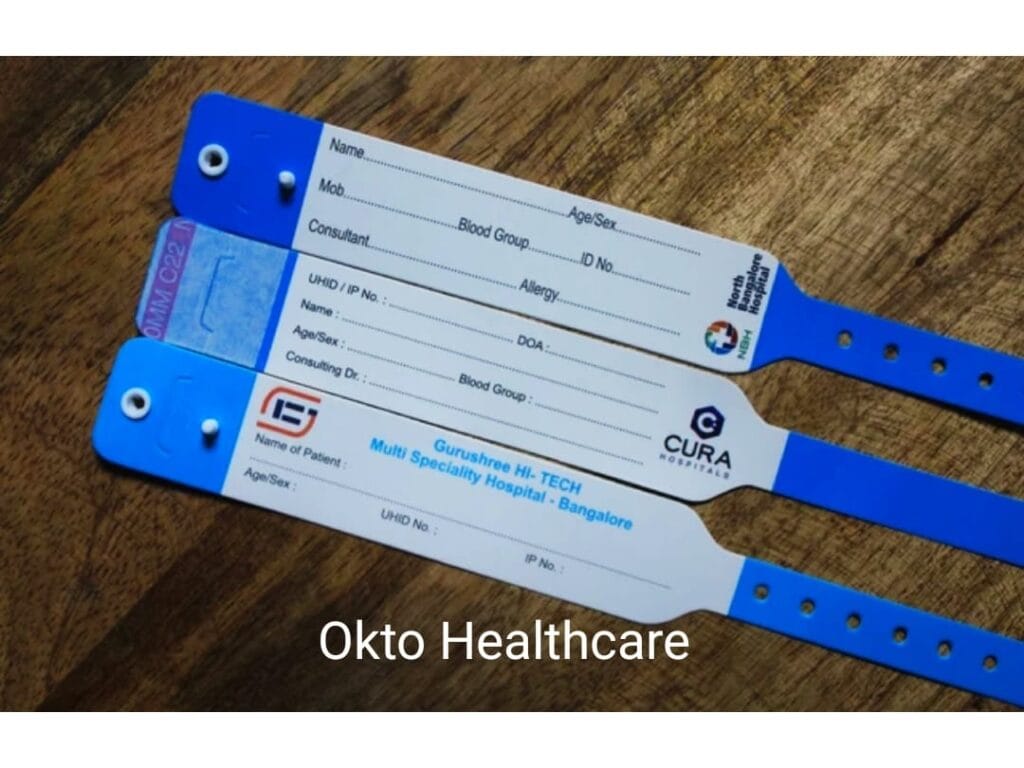Enhancing Person Treatment With Effective Recognition Bands
The implementation of reliable identification bands is a critical element in improving person treatment within health care settings. These bands not just serve to mitigate the threats connected with person misidentification yet likewise streamline interaction amongst medical employees, thus cultivating a much safer atmosphere. Different sorts of recognition bands accommodate specific demands, from sturdy wristbands for grownups to specialized bands for infants and vital situations. As the landscape of patient recognition advances, one must consider the ramifications of these systems on total medical care delivery and person end results. What innovations wait for in this critical area?
Importance of Person Recognition
Ensuring accurate person identification is important in health care setups, as it straight impacts the safety and top quality of treatment offered. Misidentification can bring about serious errors, including administering the wrong medication, performing incorrect procedures, or miscommunicating important individual info. Such mistakes not just endanger client security but can also cause lawful ramifications and decreased trust fund in medical care systems.
Effective client recognition is basic to establishing a safe environment where clients receive ideal and personalized treatment. It assists in the precise paperwork of medical histories, allergic reactions, and treatment strategies, making sure that doctor have access to vital details at all times. Durable recognition procedures help streamline communication amongst medical team, improving partnership and minimizing the risk of errors.

Kinds of Recognition Bands
Recognition bands play a critical duty in maintaining exact patient records and enhancing security within healthcare settings. Numerous sorts of recognition bands are made use of to cater to the specific requirements and needs of different patient populaces.

Another kind is the ankle joint band, which is particularly valuable for babies and babies, making certain that identification continues to be undamaged even during treatment treatments. Specialized bands, such as those for allergic reaction signals or fall threat signs, give additional layers of safety and security by attracting prompt focus to essential person problems.
Recently, electronic identification bands have actually gained popularity, incorporating barcodes or RFID innovation that can be checked to promptly recover client information. These bands improve workflows and lessen the danger of human error throughout client recognition procedures.
Advantages of Efficient Recognition
Reliable identification of clients through making use of recognition bands adds substantially to general individual security and care top quality. By making sure that each individual is accurately determined, doctor can effectively match clinical treatments and procedures site here to the right person, lessening the threat of mistakes. This is particularly important in atmospheres with high person turn over, where the possibility for misidentification is greater.
Additionally, efficient identification bands enhance interaction amongst healthcare teams. Exact and clear client recognition fosters partnership and ensures that all staff member know a client's details requirements and case history. This interaction is vital for supplying collaborated treatment, especially in emergency situation scenarios where time is essential.

Inevitably, reliable identification with making use of recognition bands not only safeguards clients yet also advertises a culture of safety within medical care facilities (Patient Identification Band). By prioritizing accurate identification, healthcare companies can boost end results and enhance the general individual experience
Carrying Out Recognition Systems
While the importance of person recognition is well recognized, the implementation of robust identification systems postures a facility obstacle for health care companies. Establishing effective identification systems needs a detailed approach, including innovation, employees training, and process integration.
First, companies need to pick appropriate identification technologies, such as barcode scanning, RFID, or biometric systems. Patient Identification Band. These innovations should be examined based upon price, functionality, and compatibility with existing framework. A pilot program can assist recognize possible issues prior to full-blown implementation
Next, thorough training for staff is important. All workers have to comprehend the significance of accurate person recognition and excel in using the selected technologies. Regular training updates and assessments can strengthen best methods and ensure ongoing conformity.
In addition, health care companies must establish standard treatments for individual identification across all departments, boosting and minimizing inconsistencies communication. Routine audits can aid recognize gaps in adherence to these protocols.

Ultimately, an effective execution of identification systems not only enhances patient safety and security yet likewise fosters a society of liability and persistance within healthcare settings, making sure reliable and regular patient care.
Future Trends in Client Recognition
Improvements in modern technology are set to change client identification techniques in healthcare settings. The combination of biometric recognition techniques, such as fingerprinting and facial recognition, is expected to enhance precision and safety. These innovations can dramatically lower the danger of misidentification, making sure that people receive the appropriate treatments and medications.
Additionally, the application of blockchain innovation for person records is obtaining traction. This decentralized method can offer a tamper-proof and protected technique for handling individual identities, thus enhancing accessibility to essential information throughout different doctor.
An additional fad is the enhancing use of mobile health applications that leverage QR codes for individual identification. These applications permit for real-time updates and easy access to person data, encouraging medical care specialists to make informed choices swiftly.
In addition, fabricated have a peek here intelligence (AI) is positioned to play a crucial role in examining individual identification information, recognizing patterns, and anticipating possible identification mistakes before they take place.
As these modern technologies develop, they assure not just to improve client safety and security but likewise to improve the general efficiency of medical care shipment systems. Embracing these developments will certainly be essential for future-proofing individual treatment methods.
Verdict
To conclude, efficient recognition bands are necessary for enhancing person safety and care high quality within medical care settings. By decreasing the dangers related to misidentification, these bands promote exact and timely info retrieval, eventually enhancing interaction amongst doctor. The implementation of durable recognition systems not just fosters a culture of safety but additionally positions medical care institutions to adapt to future patterns in person recognition technology, making certain ideal outcomes for people in diverse clinical settings.
As the landscape of person identification advances, one should think about the ramifications of these systems on total medical care distribution and individual outcomes.Reliable client identification is fundamental to establishing a secure atmosphere where clients obtain proper and tailored treatment. Eventually, prioritizing reliable person recognition approaches not only fosters a society of security yet additionally adds to improved individual results and total fulfillment with medical care solutions.
Reliable recognition of patients with the usage of identification bands adds considerably to total client safety and care top quality. The application of robust identification systems not only cultivates a society of safety however additionally positions healthcare organizations to adjust to future trends in person identification innovation, ensuring ideal results for patients in varied professional atmospheres.